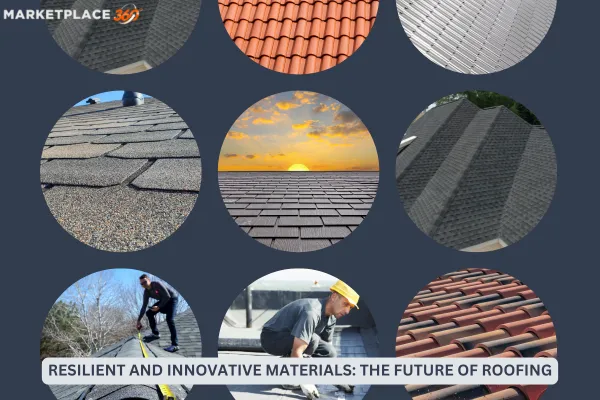
Resilient and Innovative Materials: The Future of Roofing
Resilient and Innovative Materials: The Future of Roofing
The roofing industry is evolving rapidly, driven by the need for more durable, energy-efficient, and sustainable materials. Resilient and innovative materials are now at the forefront, providing solutions that withstand harsh climates, reduce environmental impact, and offer longer lifespans. In this blog, we’ll explore the cutting-edge materials reshaping roofing and their benefits.
What Are Resilient and Innovative Roofing Materials?
Resilient roofing materials are designed to endure extreme weather conditions, resist wear and tear, and maintain structural integrity over time. Innovative materials incorporate advanced technologies, such as energy-saving properties or self-healing capabilities, to improve functionality and performance.
Top Resilient and Innovative Roofing Materials
1. Thermoplastic Polyolefin (TPO)
TPO is a single-ply roofing membrane known for its durability and energy efficiency. It offers excellent resistance to UV rays, chemicals, and punctures, making it ideal for commercial and industrial buildings.
2. Polyvinyl Chloride (PVC)
PVC roofing membranes are highly resistant to fire, chemicals, and strong winds. They are lightweight, easy to install, and reflect sunlight, which helps reduce cooling costs.
3. Metal Roofing
Modern metal roofs, made from materials like aluminum, steel, or copper, are incredibly durable and often come with recycled content. They are resistant to fire, insects, and rot and can last up to 50 years with minimal maintenance.
4. Self-Healing Materials
Some advanced roofing systems use self-healing materials that automatically repair small cracks and punctures, extending the roof's lifespan and reducing maintenance costs.
5. Modified Bitumen
Modified bitumen is a flexible and resilient material that can handle extreme temperature fluctuations. It provides excellent waterproofing and is commonly used in flat or low-slope roofs.
6. Green and Living Roofs
Green roofs feature layers of vegetation that provide natural insulation, manage stormwater, and improve air quality. These roofs are both resilient and environmentally friendly.
7. Clay and Concrete Tiles
Clay and concrete tiles are among the most durable roofing materials, resistant to fire, high winds, and heavy rains. They also provide excellent thermal insulation, helping to regulate indoor temperatures.
Benefits of Resilient and Innovative Materials
Durability and Longevity
Resilient materials are designed to withstand the toughest conditions, from hurricanes to heavy snowfalls, ensuring a longer roof lifespan.
Energy Efficiency
Many innovative roofing materials, such as TPO and metal roofs, reflect sunlight and reduce heat absorption, lowering energy costs.
Sustainability
Recyclable materials like metal and green roofs contribute to sustainability by reducing waste and improving energy efficiency.
Low Maintenance
Self-healing materials and durable options like PVC require minimal upkeep, saving time and money in the long run.
Challenges in Adopting New Materials
While resilient and innovative materials offer numerous benefits, they can come with higher upfront costs. Additionally, some materials may require specialized installation or maintenance, which could limit their adoption.
The Future of Roofing Materials
As technology advances, we can expect even more innovative solutions, such as smart roofing systems that integrate with IoT devices and adaptive materials that respond to environmental changes. These advancements will continue to push the boundaries of what roofing materials can achieve.
Conclusion
Resilient and innovative materials are transforming the roofing industry, offering solutions that meet the demands of modern construction. Whether you’re looking for durability, energy efficiency, or sustainability, these materials provide a path forward for building resilient, future-ready structures.





